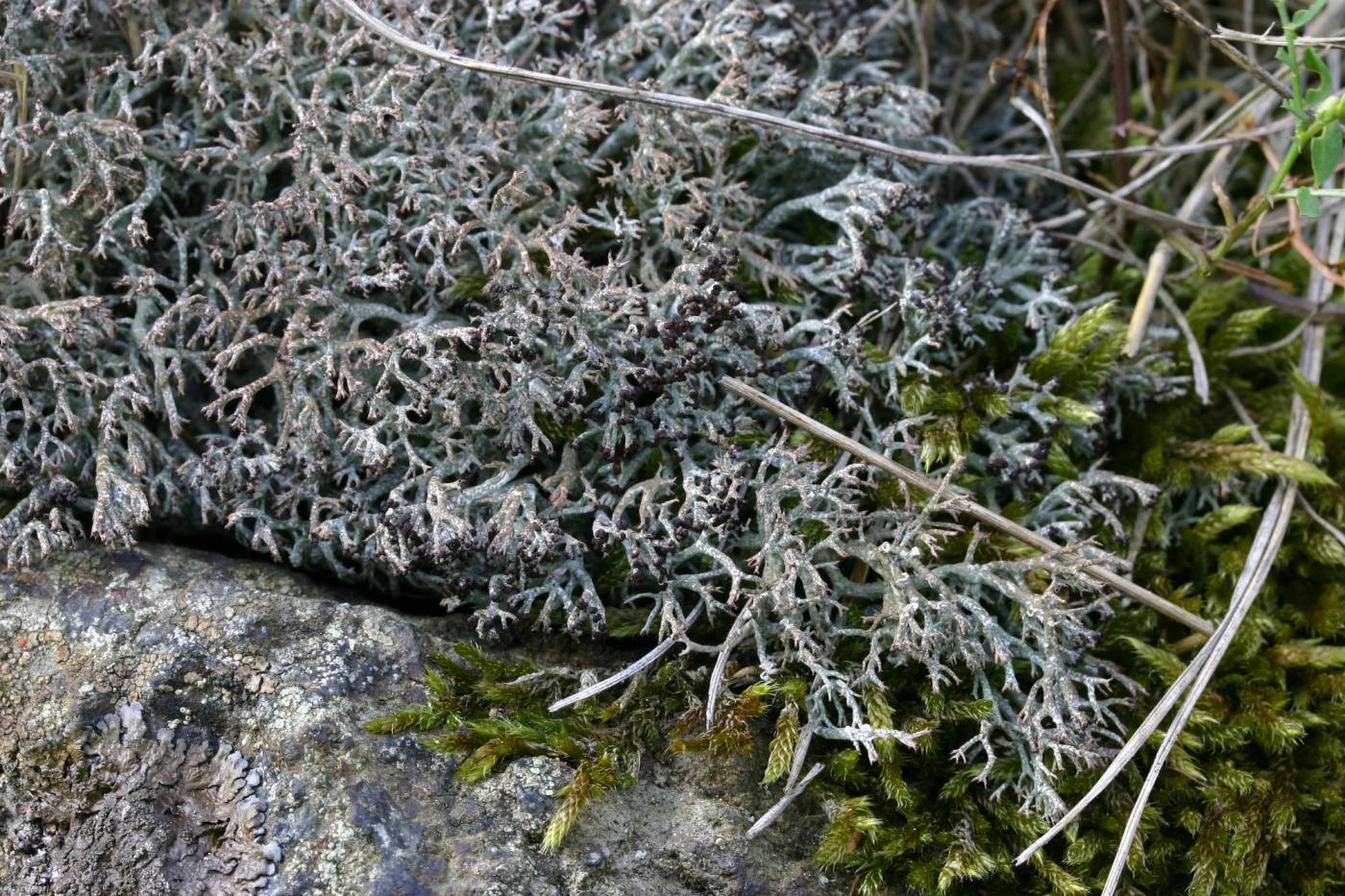A conspicuous lichen with branched, corticate, maculate-areolate, more or less squamulose podetia with usually brown terminal branches. A very similar but not closely related species is C. furcata, which usually produces fumarprotocetraric acid while C. rangiformis contains atranorin and fatty acids.
Cladonia rangiformis typically grows on various low grasslands, sandbanks and rock outcrops. It prefers basic substrates but does not avoid more acidic substrates either. It is common in Europe, mainly in warm areas, typically in the Mediterranean where it is the dominant Cladonia species on calcareous or volcanic rocks. It is absent from polar regions and high mountains. It has a sub-Atlantic and sub-Mediterranean distribution area. In the Czech Republic, the lichen is scattered to locally common at lower and middle elevations, abundant mainly in karst areas.
Literature: Ahti T. & Stenroos S. (2013): Cladoniaceae. – In: Ahti T., Stenroos S. & Moberg R. [eds], Nordic Lichen Flora 5: 87–89.
taxonomic classification:Ascomycota → Lecanoromycetes → Lecanorales → Cladoniaceae → Cladonia
Red List (Liška & Palice 2010):NT – near threatened
Occurrence in the Czech Republic
All records: 1166, confirmed 287. One click on a selected square displays particular record(s), including their source(s).
